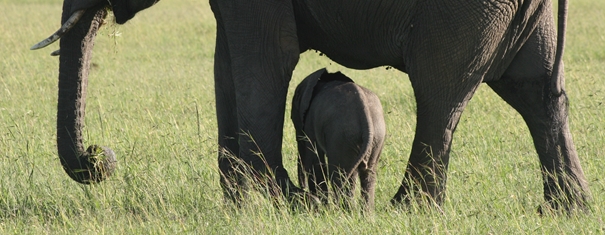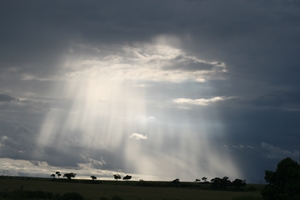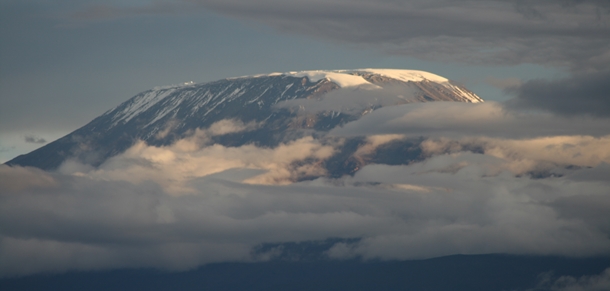 The main rains in East Africa fall between April and June. They sweep in from the Indian Ocean, starting in the coastal areas before pushing inland. These months are the quietest for safari, with lodges closing for refurbishment and mobile camps being taken down for renovation. Roads and tracks become muddy, sometimes impassable, and internal flights get delayed.
The main rains in East Africa fall between April and June. They sweep in from the Indian Ocean, starting in the coastal areas before pushing inland. These months are the quietest for safari, with lodges closing for refurbishment and mobile camps being taken down for renovation. Roads and tracks become muddy, sometimes impassable, and internal flights get delayed.
Understandably given these conditions, the prices for a safari are at their lowest at this time of year, up to 40% less than the peak summer months. It is not a great time to go to the coast if you want to dive, as the visibility is poor as the sea is rough. It is hot but with plenty of cloud and an onshore breeze it is not ideal sun-bathing weather.
But what about safari? What are the pluses and minuses of this? Well, it can rain. This is not like UK rain when it sets in as a steady drizzle for a few days. It tends to be dramatic thunderstorms, often in the late afternoon. If we take as an example the Masai Mara in the south-west of Kenya, April is the wettest month with just under 17 cm (6.7 inches) of rain falling. The monthly average throughout the year is c. 8 cm (3.1 inches). Crucially however, the average hours of sunshine per day is much the same as the rest of the year at 7 (all months are 7-8 hours), which illustrates how the rain falls – short and sharp.
So are there benefits to going during the rains? Well, the prices help, allowing you to stay at some of the finest properties at greatly reduced prices. Everywhere is green and lush, new grass is coming through and sprinkled with wild flowers. The rain also helps keep the dust down as you drive along the rough tracks.
True, if the grass is too tall, it can make game-viewing harder as the animals are hidden and if there is plenty of water the game does not have to congregate around waterholes and rivers, making it more dispersed. Not a problem. You still see plenty of animals. Elephants, giraffes and the other large game still stands tall. The smaller animals do not want to graze in tall grass as they cannot see predators stalking them, so tend to congregate in open areas, attracting the cats to them. Some places are better than others and we can advise you on this.
congregate around waterholes and rivers, making it more dispersed. Not a problem. You still see plenty of animals. Elephants, giraffes and the other large game still stands tall. The smaller animals do not want to graze in tall grass as they cannot see predators stalking them, so tend to congregate in open areas, attracting the cats to them. Some places are better than others and we can advise you on this.
There are also lots of young. Many animal species give birth at this time of year as food is bountiful for both mother and babies, meaning they do not have to walk constantly in search of it. The tall grass also gives cover for the young who are too young and slow to outpace a predator.
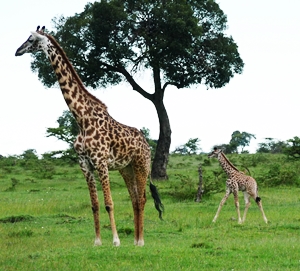 As it is a quieter time for safari there are less people around and as the game is more dispersed there are less vehicles travelling to the same viewing places. You really get a feel for the vastness and tranquillity of the African savannah.
As it is a quieter time for safari there are less people around and as the game is more dispersed there are less vehicles travelling to the same viewing places. You really get a feel for the vastness and tranquillity of the African savannah.
After a downpour, some tracks get very muddy, even impassable, but the vehicles are 4×4, all driven by experienced guides and you would not believe what they can drive through. If you are travelling with kids this is an added attraction for them, mine loved all the slipping and sliding.
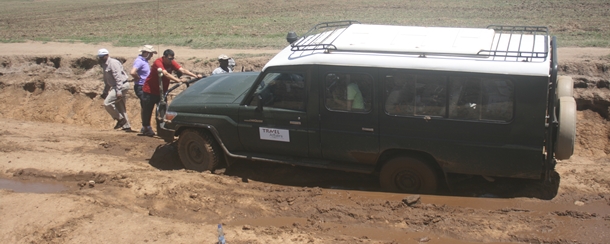 And the six million dollar question – would I go on safari during the rainy season? I would and I do. Last year my family and I went to Amboseli, the Mara and Nakuru in April. We had some amazing late afternoon storms with thunders crashing overhead and lightening splitting the sky, but saw Kilimanjaro with snow on top, lions, leopards, cheetash and lots more. The kids loved the sliding around and all the baby animals. The grown-ups loved it to.
And the six million dollar question – would I go on safari during the rainy season? I would and I do. Last year my family and I went to Amboseli, the Mara and Nakuru in April. We had some amazing late afternoon storms with thunders crashing overhead and lightening splitting the sky, but saw Kilimanjaro with snow on top, lions, leopards, cheetash and lots more. The kids loved the sliding around and all the baby animals. The grown-ups loved it to.
